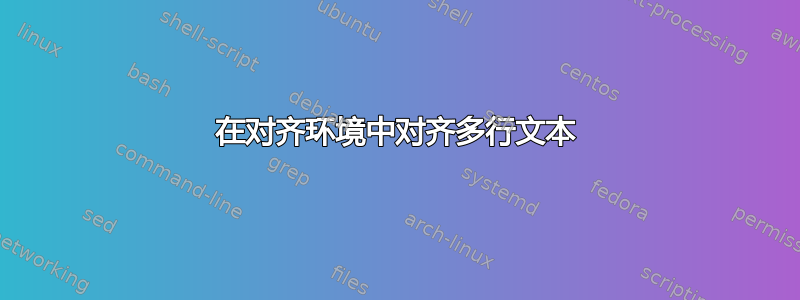
我想使用对齐环境的右侧来呈现下一行的原因。如果解释需要多行,则对齐失败。这可以通过添加水平空格来直观地实现,但应该有更好的方法。
如何修复此问题?
\documentclass{article}
\usepackage{amsmath}
\begin{document}
\begin{align}
a + b &= \quad \text{short reason} \\
c + d &= \quad \text{a really long and} \\
&\phantom{=} \quad \text{complicated reason} \notag \\
e + f \text{.}
\end{align}
\end{document}
如果您编译上述代码,您就会明白我的意思。我不知道如何将编译后的代码添加到问题中。如果您知道如何将编译后的代码添加到问题中,请这样做。
答案1
答案2
使用parbox:
\documentclass{article}
\usepackage{amsmath}
\begin{document}
\begin{align}
a + b &= \quad \text{short reason} \\
c + d &= \quad \parbox[t]{0.35\textwidth}{
really long and complicated\\
reason in two lines} \\
e + f &=\text{.}
\end{align}
\end{document}
(红线表示文本边框)
补充: 考虑到评论芭芭拉·贝顿,上述解决方案应为:
\documentclass{article}
\usepackage{amsmath}
\begin{document}
\begin{align}
a + b & = \quad \text{short reason} \\
c + d & = \quad \parbox[t]{0.35\textwidth}{\raggedright % <---
really long and complicated\\
reason in two lines} \\
e + f & = .
\end{align}
\end{document}
在这个简单的情况下,结果与第一种情况相同,但是如果单词真的很长,第一行放不下,则添加\ragged将避免第一行单词之间出现较大的空格。
答案3
@AboAmmar 答案的变体,但使用了包含文本和段落的环境:
\documentclass{article}
\usepackage{amsmath}
\begin{document}
\begin{align}
a + b &= \quad \text{short reason} \\
c + d &= \quad \begin{tabular}{@{}p{0.8\textwidth}}
really long and\\
complicated reason
\end{tabular} \\
e + f &=\text{.}
\end{align}
\end{document}
生产
当然,0.8\textwidth可能需要进行调整...
答案4
另一种方法可能是使用\begin{center} line_one\\line_two \end{center}
\documentclass{article}
\usepackage{amsmath}
\begin{document}
\begin{center}
\begin{equation}
a + b = \quad \text{short reason}
\end{equation}
\begin{equation}
c + d = \quad \parbox[t]{0.35\textwidth}{
really long and complicated\\
reason in two lines}
\end{equation}
\begin{equation}
e + f =\text{.}
\end{equation}
\end{center}
\end{document}







